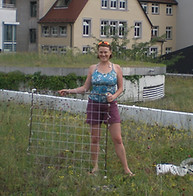Forage Resources
for Specialist Bees in BC
The Native Bee Society of BC received funding from the Investment Agriculture Foundation of BC to promote the planting of suitable forage for pollinators. We focused on specialist bees occurring in two of BC’s most populated ecoregions: the coastal Pacific Maritime region and the interior Mountain Cordillera region.
Why these forage resources?
Specialist bees rely on specific plants to feed their offspring, which makes them vulnerable to land use change. Generalist species, by contrast, are able to use many plants, and so will also benefit if specialists are cared for. Many specialist bee populations are poorly understood. Lack of understanding of population distributions or specific floral relationships poses a risk to specialist bees because:
-
critical habitat may be lost
-
forage plants may not be included in planting plans
-
introduced or invasive bee species may spread disease or compete for foraging and nesting sites
Native bees and native plants evolved in mutual relationships with each other over the last 100 million years. Specialist bees rely on specific plants to supply the pollen needed to feed their offspring. Without their host plant, specialist bee populations can disappear. Landscapes that support specialist bees also benefit generalist species who have less restricted floral palates.
These lists were developed with reference to Jarrod Fowler’s work on pollen specialist bees.
Download the Resources







Project Contributors

Christine Thuring

Lincoln Best

Bonnie Zand

